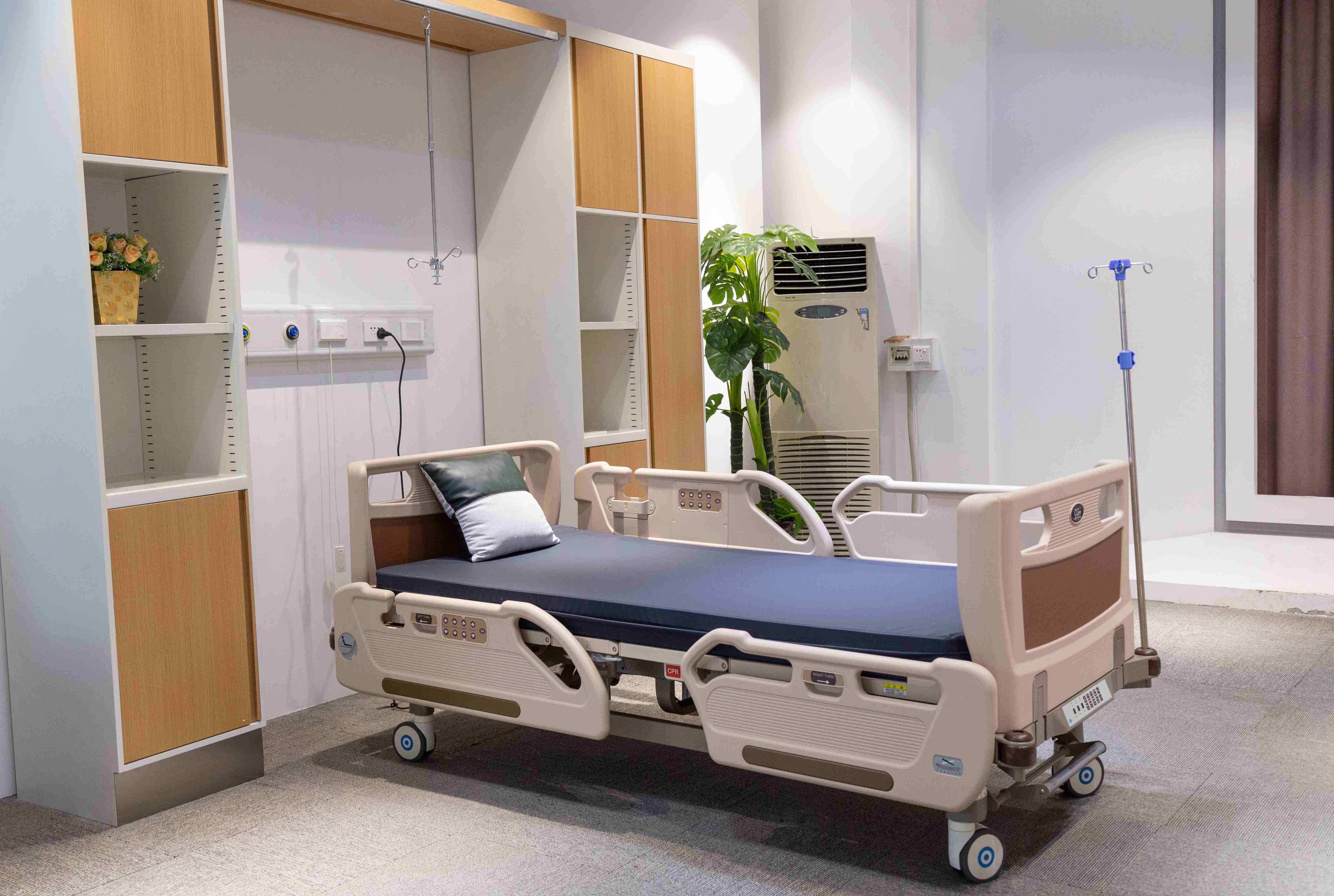In the modern medical environment, hospital beds are not only an important tool for patients' rehabilitation, but also a key equipment for medical institutions to improve service quality. Faced with various types of beds on the market, should hospitals choose electric beds or manual beds?
1. Electric hospital beds: technology empowers and improves medical experience
With the advancement of technology, electric beds have gradually become the first choice for modern hospitals. It is mainly driven by electric motors and can easily adjust the height, back and leg angles, reduce the physical exertion of medical staff, and improve the comfort of patients.
Advantages of electric hospital beds:
a. Convenient operation: Through the remote control or control panel, patients or caregivers can easily adjust the height and angle of the bed without manually rotating the crank.
b. Reduce the burden of care: Medical staff can more easily help patients turn over, raise their heads or adjust the position of their legs, reducing occupational injuries caused by frequent bending or manual adjustment.
c. Improve patient comfort: Patients can adjust the bed according to their own needs, improve sleep quality, and reduce discomfort caused by fixed posture.
d. Intelligent functions: Some high-end electric beds are equipped with intelligent functions such as heart rate monitoring and weight detection, which makes it convenient for doctors to grasp the patient's condition in real time.
However, the price of electric beds is relatively high and requires a stable power supply. In some hospitals with limited funds or backward infrastructure, it may become a challenge.

2. Manual hospital beds: economical and meet basic needs
In contrast, manual beds are still widely used in many hospitals due to their low cost and simple maintenance.
Advantages of manual hospital beds:
a. More affordable: Compared with electric beds, manual beds are cheaper and more suitable for hospitals with limited budgets.
b. Not affected by electricity: No power support is required to ensure normal use even in power outages, especially in resource-constrained areas or emergency medical environments.
c. Simple structure and easy maintenance: The manual adjustment mechanism is relatively stable, not easy to damage, and the later maintenance cost is low.
However, the operation of manual beds is relatively cumbersome, requiring medical staff to manually adjust, which increases the workload of nursing and may also affect the patient experience, especially for patients who are bedridden for a long time, which may reduce comfort.
In general, hospitals should choose beds suitable for their own hospitals based on their own positioning: large and medium-sized hospitals or high-end medical institutions are suitable for choosing electric beds to improve the quality of care and enhance the patient experience; grassroots hospitals, rehabilitation centers or institutions with limited funds can choose manual beds to meet basic medical needs while reducing procurement costs.